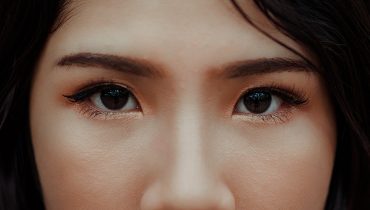There are several ways you can tan your skin. The easiest is to simply spend time in the sun. The skin will naturally produce melanin for protection and in the process achieve a nice dark tan.
But not everyone has the luxury of basking in the sun for hours every day.
There are two alternatives you can use:
- One is to use a tanning bed, usually found in tanning salons. You lie in a sort of enclosed bed while UV lights stimulate your skin to produce melanin.
- The other option is to use a sunless tanner. This is a spray that contains DHA, a type of sugar that reacts with the skin and darkens it slightly.
Let’s look at each in a bit more detail.
Tanning Bed
Tanning beds are enclosed devices with UV lamps on the inside. You simply lie inside the device for a set period, usually 15-20 minutes, as the laps blast your skin with UV rays.
Much like basking in the sun, the UV radiation triggers the release of melanin on your skin which causes tanning.
Tanning beds can be harmful in some situations. In fact, the WHO does not recommend using a tanning bed for cosmetic purposes.
But if used properly under professional supervision, they are generally safe. The salon operator may limit your time in the tanning bed depending on your skin tone. If you are very fair skinned, you’ll spend less time inside to avoid skin damage.
You’ll also need to use plenty of moisturising lotion to keep your skin from drying out. You can also use a tanning lotion specifically made for indoor tanning. It will hydrate your skin while also enhancing your natural tan.
Pros of using a Tanning Bed
- Produces a more natural tan. Only the UV radiation is artificial, the tanning process is as natural as the one that happens under the sun.
- It lasts longer without needing to be maintained. You can exfoliate your skin as usual, go swimming and do all the things you would do.
- No special preparation required. You can simply show up at the salon and get into the tanning bed.
- You can control how dark you get by varying the amount of time you spend in the tanning bed and the number of tanning sessions.
Cons of using a Tanning Bed
- It could be harmful under certain circumstances. If you are not careful it can cause skin damage and even increase risk of cancer. That’s why it’s important to have it professionally done.
- You can’t do it at home.
- The tanning takes time to fully show.
Spray Tan
A spray tan or a sunless tan is a type of spray that you apply on your skin. The spray contains DHA as the main active ingredients.
DHA reacts with the topmost layer of your skin and creates a darker shade. Unlike a tanning bed there is no melanin involved when you use a spray tan. It’s simply your skin temporarily changing colour.
So far most studies have shown that DHA is completely safe. It only reacts with the dead cells on the surface of the skin.
You can apply a spray tan on yourself at home or get it done at a booth in a salon. Going to a salon is best if you want to tan your entire body.
Pros of using a Spray Tan
- It’s completely harmless. No risk of skin damage or cancer and no interactions with medication.
- It takes a shorter time to apply. In a spray tan booth, spraying the whole body takes about 3 minutes.
- Immediate results. You don’t have to wait for melanin production. Your skin ‘tans’ immediately.
Cons
- The tan doesn’t last too long. It fades away within a few days. You also need to avoid certain activities like prolonged swimming or aggressive exfoliation to ensure it doesn’t fade away too quickly.
- The tan is not as natural as that of a tanning bed especially if you don’t get it professionally done.
- The spray tan might stain your clothes and bedding.
When to use a Tanning Bed
When you want a deep natural tan that will last long. But make sure you do it at a salon to make sure it’s safe.
When to use a Spray Tan
When you want a quick tan such as before a major event. A spray tan is also better if you cannot or don’t want to use a tanning bed (e.g. you have very light skin or are on certain medication that shouldn’t interact with UV).


